My first tuna experience happened 20 years ago this October, I was fishing with my father on the 100′ party boat Doris Mae out of Barnegat Light, New Jersey. I was 14 years old and I had absolutely no idea what kind of experience I was in for.The trip was 22 hours long with most of the fishing occurring between 12:00 am and 1:00 pm. The ride to the fishing grounds was 5 to 6 hours and ideally you slept on the way out so you would have the energy to fight large aggressive fish for 13 hours straight.Unfortunately, my 14-year-old mind was so excited I did not sleep well the night before and I didn’t sleep a wink on the ride out to the grounds, which is why at 4:00 am I was half asleep at the rail casually holding my rented 6/0 Penn Senator combo.All that changed when a 100-lb class yellowfin swam by, inhaled my butterfish, and began swimming upward. Most nighttime tuna chunking off New Jersey is done with weighted lines and it took my sleep deprived brain a few seconds to realize that something important might going on when my line suddenly went slack. Snapping back to reality I began to crank like a madman, eventually coming tight on my first tuna which proceeded to drag me all over that boat for the next 30 or so minutes.I never felt power like that from a fish before and I was making many classic rookie mistakes.I would love to tell you that eventually I got the upper hand and I landed my first tuna ever on that trip, but it would be a lie.I made one final mistake when I had the fish less than 10 feet from the gaffs.It tried to make one final run and I very gently thumbed the spool as I didn’t think my arms could take another run.Pop went the leader and away swam the biggest yellowfin that I have ever hooked.It was the only bite I had that whole trip, but it was enough to start a new chapter of my fishing obsession.Since that day I have made hundreds of tuna trips, landing plenty of tuna, but will have visions of that first fish on its side in those bright lights forever.
The Trip:In the Northeast (Massachusetts to New Jersey), the party boat tuna season runs from late August through November.20years ago, there were quite a few boats running trips off New Jersey that almost all held to a standard schedule of leaving between 3 – 6:00 pm and returning around 22 hours later.This is still the most popular time and length of trip as it allows fishing for the second half of the night bite, the sunrise bite, and a few hours of daylight fishing before needing to return to port. In recent times however, several boats have started to add longer and more varied options.Trips of 30, 36, 48, and even 60 hours in length are now available giving anglers more fishing time along with opportunities to add other species such as mahi, tilefish, or cod to the hunt.My personal favorite trips are 30 hours long leaving in the early morning, with the boat arriving in the canyons in the early afternoon.This allows for a few hours of mahi fishing (if there are any around) before getting on drift or anchor at sunset, giving the angler a shot to fish the sunset bite, night bite, and sunrise bite all in the one trip.All tuna trips that I know of are booked by reservation weeks or months ahead of time, so it is best to make reservations in advance!
The Technique:Anglers typically spend most of their time bait fishing on party boat tuna trips. Most boats supply frozen butterfish and sardines as bait.A whole butterfish or sardine is hooked in a manner that allows the hook to be completely hidden inside the bait.The bait is then fed out into the chunk line (mates will be continuously throwing over small chunks of butterfish as chum).When possible, I prefer fishing with no weight at all and allowing the bait to sink naturally as it can, floating right with the chunks.However, due to the fish being deeper than it is practical to freeline a chunk or the roughness of the sea, an egg sinker from 1/4 – 10 ounces can be used about 6 feet in front of the bait to get it to depth.
The other way a tuna is hooked on a party boat is by vertical jigging. Tuna jigging takes a lot of work, and many would-be jiggers give up after only a few minutes, but all that hard work can pay off with big rewards. Jigging can be especially effective if there are albacore (longfin tuna) around and or if more than one angler is jigging at the same time. I don’t know why, but I have seen many more tuna hooked when there are multiple people jigging. It may appear like a school of bait to the tuna, or just a competition thing, but it is something I have seen time and time again. Fishermen can simply lower their jig to the desired depth and sweep the rod tip up and down, but I prefer to jig on the swing. I underhand lob the jig out 50 to 70 feet from the boat and let it sink to slightly above the depth I expect tuna to be cruising. I sweep the rod up and down until jig is directly under me, then I rapidly retrieve the jig and cast again. I find I get most of my hits on the fall, but don’t be surprised if a fish rips the jig as you are retrieving it to cast again.
The Tackle:Any quality conventional reel, capable of holding 300 yards or more of 80-lb mono that has a smooth, reliable drag can work for chunking. Most of my tuna have been landed fishing USA made 6/0 “High Speed” (red plate) Penn Senators that are almost as old as I am, but a 30 or 50 wide 2 speed lever drag is much nicer and convenient to use if you have access to them.For chunking, I am a big believer in 80-lb mono. Though I know people that fish 50 or 60-lb successfully, 80-lb allows for better abrasion resistance and is more forgiving when tangles occur, as they are bound to happen, especially for a beginner.A chunking rod should be from 5’6″ to 7′ long and rated at least 30-80 but not exceed 50-100lb. I also prefer rods with a large foregrip that can be placed on the rail when fighting these fish.
Bait rigs for tuna should be simple, strong, and made from top quality materials.A standard chunking rig consists of a forged live bait style or circle hook from 4/0 to 8/0 (depending on bait size, with a 7/0 being a good starting point) connected to a 6-foot-long section of 40 – 80lb fluorocarbon leader and finished off with a quality barrel or ball bearing swivel.Some people will say fluorocarbon is unnecessary, but I have seen several times where those fishing fluorocarbon were getting bites and those fishing mono leaders were standing around watching. If weight is needed it can be added as an egg sinker slipped onto the running line before tying on the swivel, keeping the sinker at least 6 feet away from keen eyed tuna.
Jigging can be done with the same tackle; however most chunking tackle is heavy and tends to wear out the angler trying to jig for hours at a time. I prefer a 7′ rod to allow for longer sweeps of the jig and a reel with a slightly higher ratio. I have jigged plenty of tuna on a red 4/0 Senator spooled with 50-lb Ande pink, but these days I prefer a Shimano Torium 30 and a Calstar glass rod loaded with 65lb metered braid. This setup allows me to know exactly how deep my jig is working. I keep my jig selection simple with a handful of 6 – 10oz hammered diamond jigs in silver and gold (I am partial to Run Off Jigs) as well as a few Shimano Butterfly jigs or Tsunami X-Wave Jigs in pink or sardine/blue color from 5 to 8 ounces.
The Bite and Fight:Most of the time when a tuna eats your bait, there is no mistake. They grab the bait and start swimming away very quickly and your reel, which should be in free spool, will begin to race. Occasionally, as I experienced for my first bite, the tuna will eat the bait while swimming up and your line will simply go slack. When you get a bite, allow the fish a S-L-O-W 3 count and then lock the reel and crank. Notice I did not say set the hook, a 50lb tuna swimming away and you cranking the other way will bury the hook in the fish’s mouth and make if far more likely to hook the fish then swinging with the rod.
Some anglers bring along fighting belts and harness systems to help them fight the fish. I personally find that most of the time I am better off using the high rail of the boat as a fulcrum point and using the rod as a lever. It takes a little getting used to, but once the technique is understood, fighting fish on the rail is much easier. The main advantage is not having to unclip or remove the rod from the belt before adjusting their position in response to other anglers, the fish making a run for the horizon, or diving under the boat.
A Few Random Tips:Most tuna caught each year are landed on frozen bait, but often live bait will be much more effective although it is less available. Most trips I try to leave the dock with my own personal supply of live goodies already tucked into my live well. Spot, snapper blues, croakers, even live eels can be caught or bought ahead of time and are relished by tuna. On one trip some years ago, the night bite had been slow with 24 anglers landing only 5 tuna all night, most of them being small longfin. Once the sun rose the captain started reading more and more fish under the boat, but they were on the bigger side (true 60-90lb yellowfin) and they were leader shy. People fishing dead bait had to drop down to 30 or 40lb leaders to get bit and as a result where landing very few fish. I still had 7 live bluefish (the only live bait on the boat) in my bucket from 6-7″ long and those big tuna were suckers for them. Being that the bait was alive we could get bit still using 80lb fluorocarbon, allowing my father and I to land 5 beautiful tuna on those 7 baits while the other 22 anglers could only land 3 fish the rest of the trip due to their lighter leaders.
Didn’t manage to get live bait beforehand? No Worries! Live squid are one of the absolute best live tuna baits and can often be jigged at night under the boats lights once the tuna fishing has commenced. One small squid jig tied onto a light spinning rod can often gather all the bait an angler needs in a few minutes. Once you see live squid swimming around in the boats lights it is time to get out your bait rod and go to work. I prefer Yo-Zuri squid jigs and I bring my own bucket or live well to keep them in. Many boats will have a communal live well where bait can be placed, but I have learned through experience, that you can spend hours catching live bait only to have other anglers grabbing your hard-earned baits once the tuna bite starts. I will gladly help fill up the boats live well if the bite hasn’t started yet, but only after my private bait supply is secure.
Be prepared for extras. At some point during most (but certainly not all) tuna trips I have done, mahi, appear around the boat. The angler that gets a bait attached to a light leader in front of these fish first has the best chance of landing them. I always have a 20lb class spinning rod and reel with a 2/0 live bait hook close at hand and chunk of sardine or fresh peanut bunker ready to pin on and cast at the first flash of green and yellow I see in the boat’s light. I have managed to land at least 1 mahi at night on over 50% of my tuna trips, and often I am the only one on the boat to do so. Be ready, be quick, and enjoy the bonus fish tacos the canyons tend to provide!
Final Thoughts:Party boat tuna angling in the Northeast is a fun and exciting while being a budget friendly way to experience the joys and wonders of blue-water tuna fishing. Each year is different with some being great fishing and others being more of a grind, but to me the sight of the sun rising over the Hudson Canyon or the trill of hearing the first cry of fish on is more than worth the price of the trip. Do a little research, pick a trip that works for you, and give offshore party boat tuna a try, you just might get hooked!
For anyone interested in a complete list of the gear I bring on my trips, simply send me an email to braden@fishermenssource.com and I will provide a list of my Tuna trip essentials.

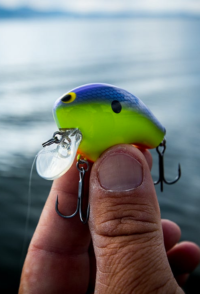
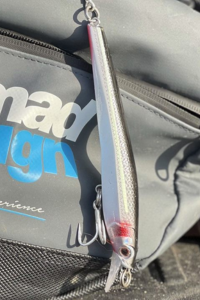

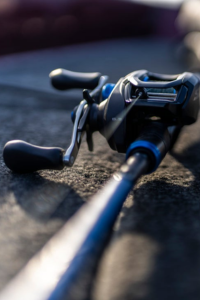
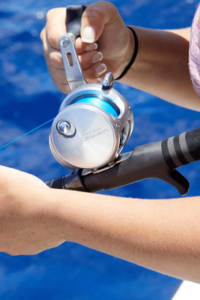
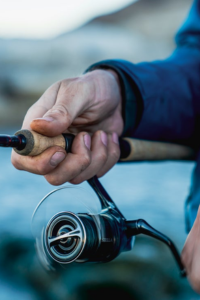
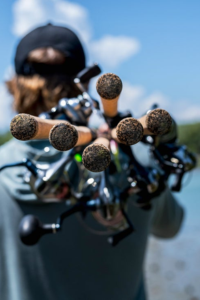
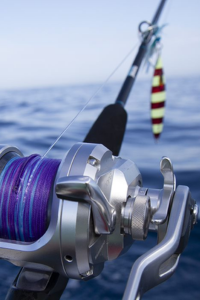
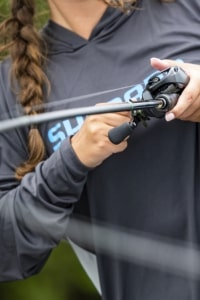
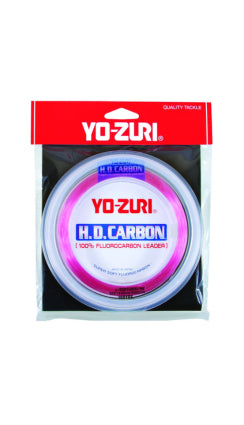
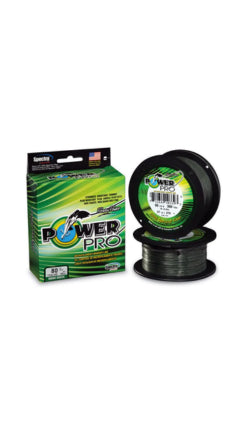
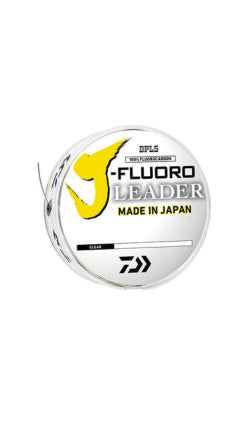
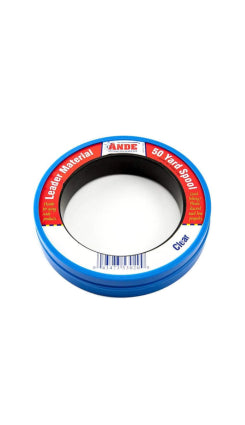
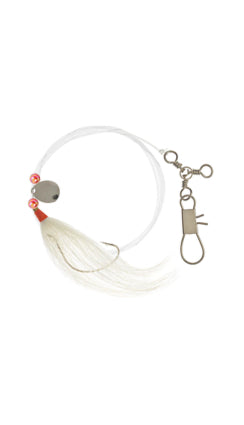
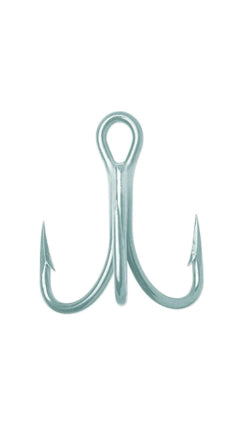
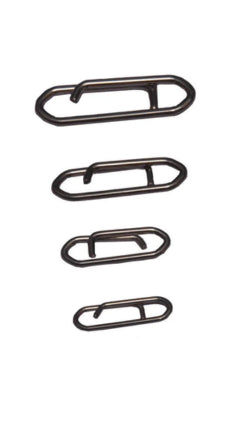
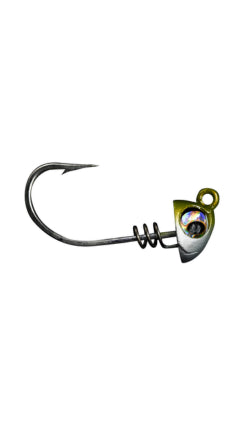
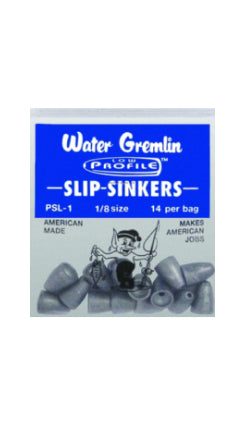
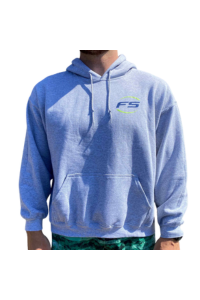
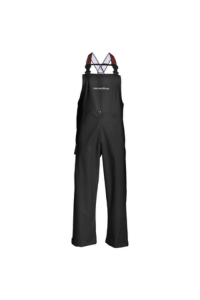
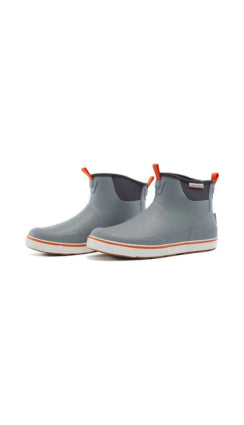
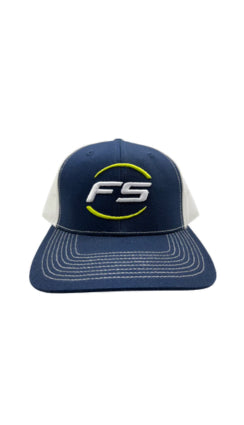
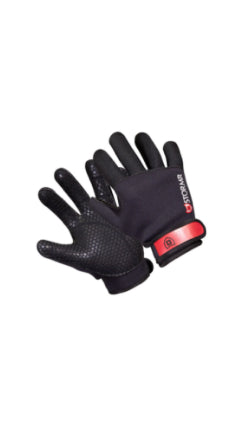
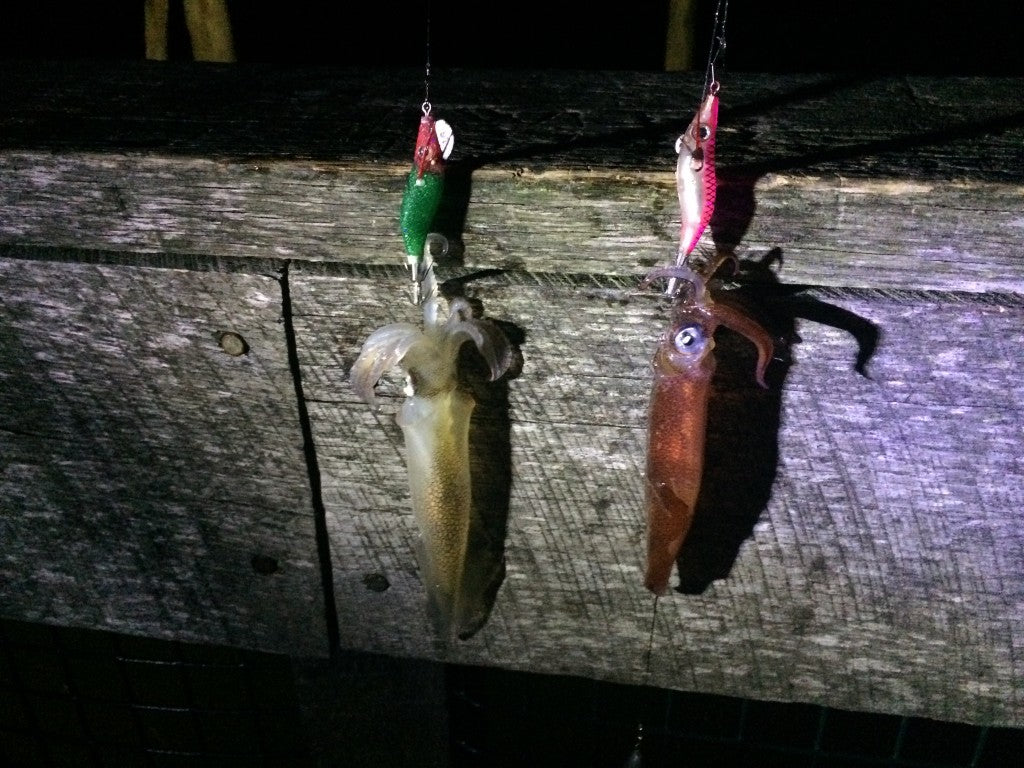
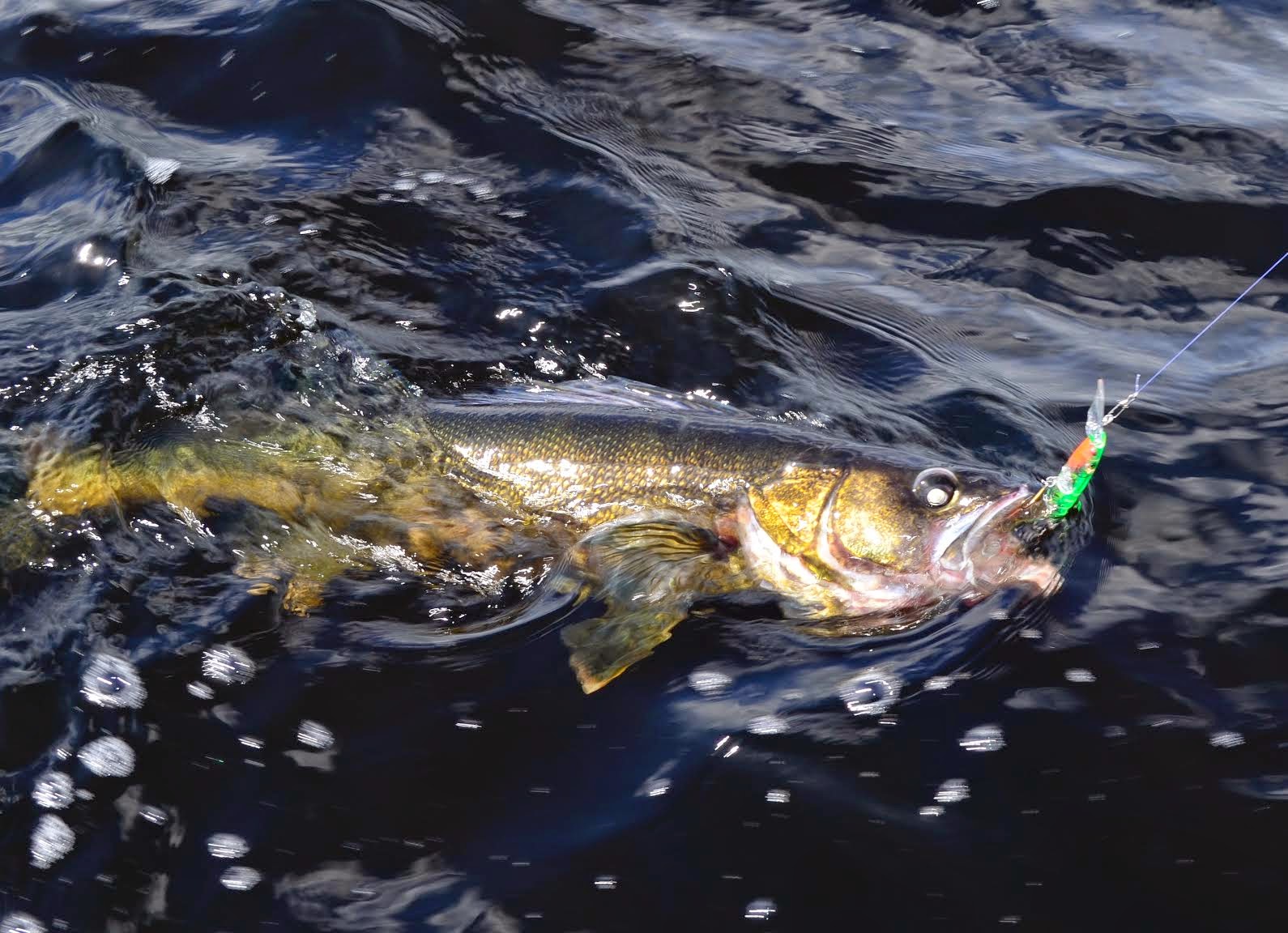
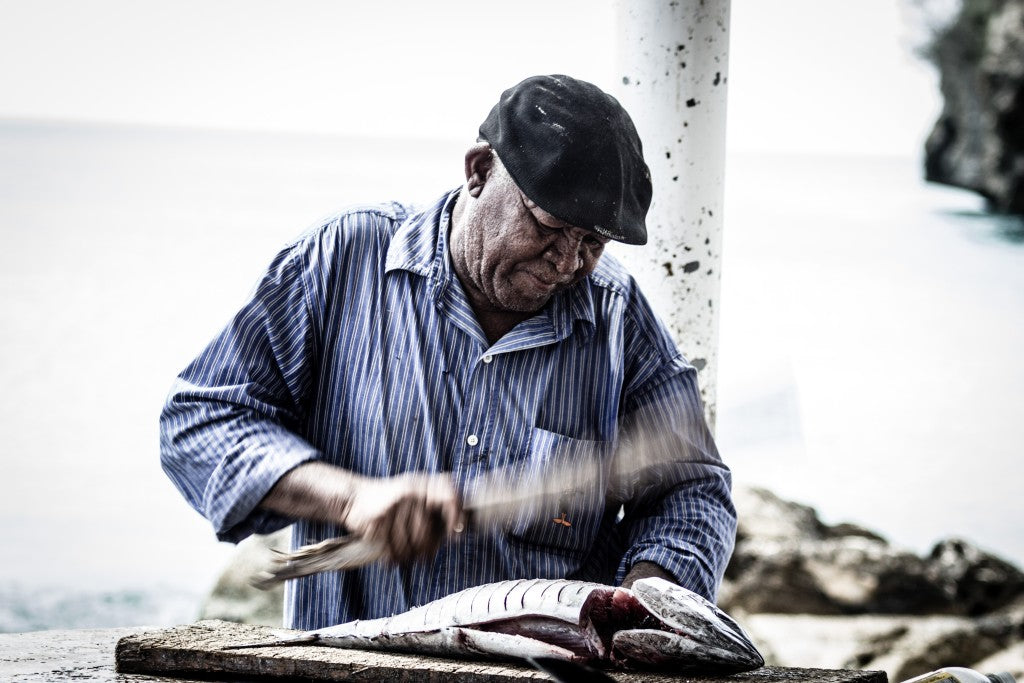
2 comments
Braden
David,
Sorry for the delay in my response. It is hard to say exactly without knowing exactly rod and company you are talking about, as different manufactures rate their rods differently. That being said, I am sure either of the rods you mentioned will have no problem handling your typical 40-70 lb class yellows and longfins. The shorter and heavier rod will give you more leverage on tuna but you will also be slightly more inclined to pull hooks especially with braid. Personally, I would go with the 6’4” medium heavy, as I prefer a slightly longer rod for jigging and find a slightly lighter rod better for throwing some of the lighter jigs I find work best for Atlantic tuna. If you would like to go over some options in more detail please reach out to us as 800-388-4149.
Braden
David,
Sorry for the delay in my response. It is hard to say exactly without knowing exactly rod and company you are talking about, as different manufactures rate their rods differently. That being said, I am sure either of the rods you mentioned will have no problem handling your typical 40-70 lb class yellows and longfins. The shorter and heavier rod will give you more leverage on tuna but you will also be slightly more inclined to pull hooks especially with braid. Personally, I would go with the 6’4” medium heavy, as I prefer a slightly longer rod for jigging and find a slightly lighter rod better for throwing some of the lighter jigs I find work best for Atlantic tuna. If you would like to go over some options in more detail please reach out to us as 800-388-4149.
Braden
David
seeking rod recommendation…
I do an extended tuna trip each year out of RI (30 anglers on a 100’ boat).
Most troll and chunk with 50s, 70s and 80s (reels).
When there is schooling tuna, many switch to jigging and use spinning combos.
I purchased an 8000 size reel and 50# braid.
My rod choices include a medium heavy 6’4" rod (50-130 and 5-8oz lures)
or the heavy 6’ rod (80-200 and 6-10oz lures)
I believe the medium heavy would get the tuna on board, but I have a feeling (for control sake) that the heavy rod is the best choice.
Please advise
seeking rod recommendation…
I do an extended tuna trip each year out of RI (30 anglers on a 100’ boat).
Most troll and chunk with 50s, 70s and 80s (reels).
When there is schooling tuna, many switch to jigging and use spinning combos.
I purchased an 8000 size reel and 50# braid.
My rod choices include a medium heavy 6’4" rod (50-130 and 5-8oz lures)
or the heavy 6’ rod (80-200 and 6-10oz lures)
I believe the medium heavy would get the tuna on board, but I have a feeling (for control sake) that the heavy rod is the best choice.
Please advise